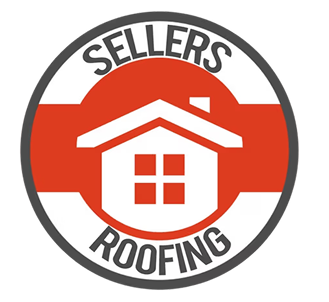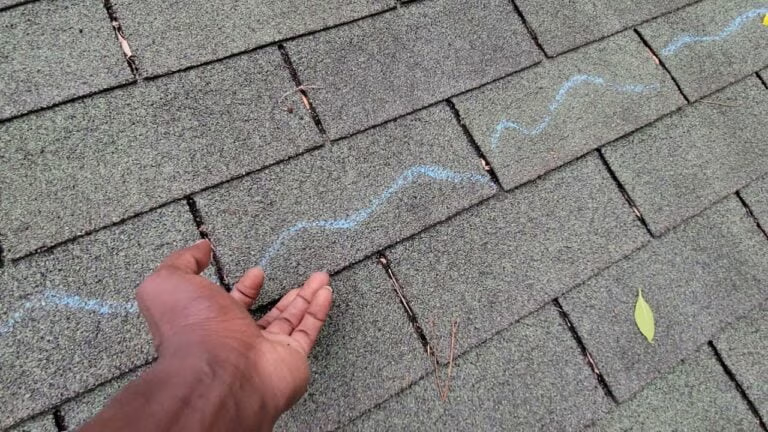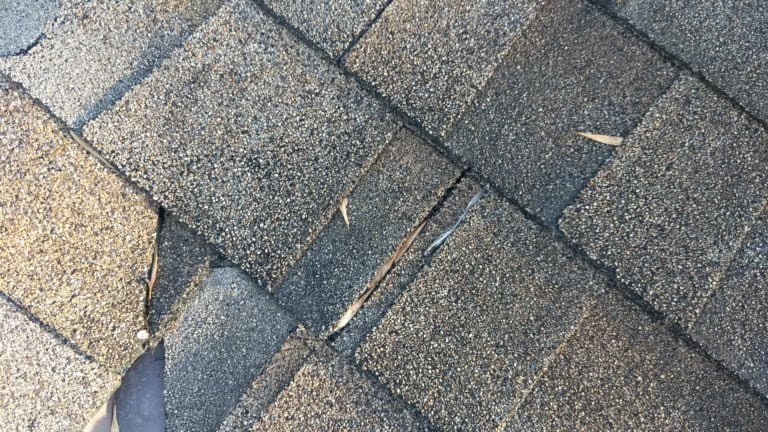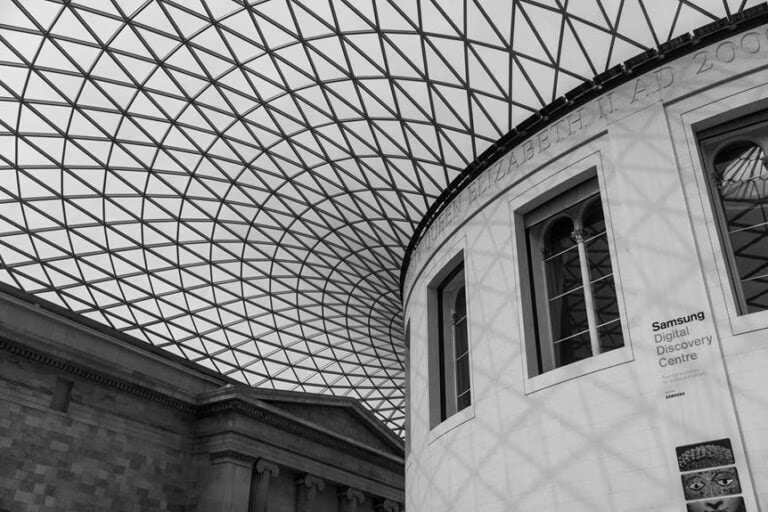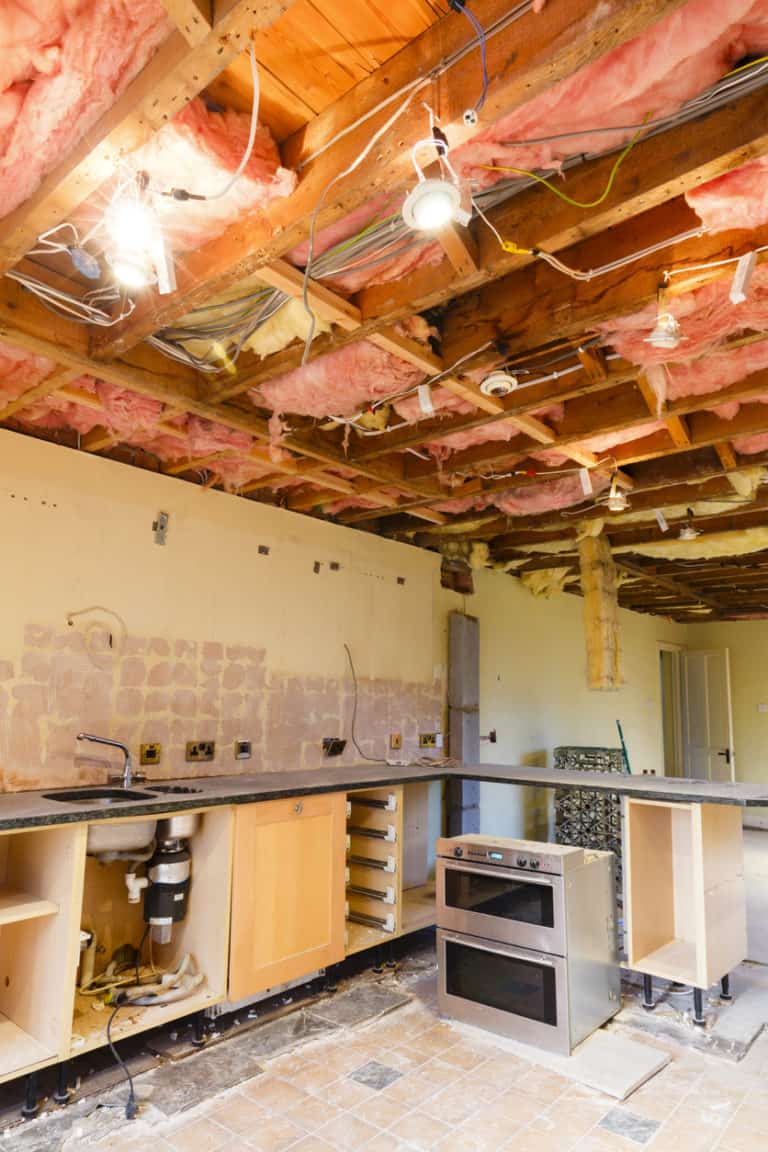Table Of Contents:
- Why Your Business Needs EPDM Roofing Solutions
- Understanding EPDM Roofing Systems and Their Suitability for Commercial Properties
- Key Benefits of EPDM Roofing Installation for Your Business
- The EPDM Roofing Installation Process for Commercial Buildings
- Exploring the Lifespan and Durability of EPDM Roofing in a Commercial Context
- Maintenance and Repair of EPDM Roofing Systems for Businesses
- Making the Smart Investment Why EPDM Is a Sound Choice for Your Business’s Future
- Frequently Asked Questions
- Final Thoughts
Why Your Business Needs EPDM Roofing Solutions
In today’s commercial environment, having a roofing system that offers unmatched protection, durability, and efficiency is essential. As a roofing professional, I have witnessed firsthand the transformative impact that EPDM roofing solutions can have on business assets. EPDM, which stands for ethylene propylene diene monomer, is a synthetic rubberroofingmembrane that boasts exceptional resistance to ultraviolet (UV) rays, extreme temperatures, and severe weather. Its application on flat and low-slope roofs has become a popular choice for commercial properties looking to mitigate risks such as leaks, water damage, and high maintenance costs. Throughout this article, I will explore exactly why EPDM roofing systems are so suitable for commercial buildings, detailing their composition, benefits, installation processes, and long-term durability. Additionally, I will integrate recent peer-reviewed studies that support these claims, offering comprehensive and actionable insights for business owners. With a focus on sustainability, energy efficiency, and cost-effectiveness, EPDM roofing solutions offer an optimal balance between performance and investment, ensuring that your building remains protected and operationally efficient for years to come.
Understanding EPDM Roofing Systems and Their Suitability for Commercial Properties
EPDM roofing systems have become increasingly popular in the commercial sector. In my experience, a deep understanding of EPDM’s composition and versatility underpins its successful use on business roofs. EPDM is a durable, synthetic rubbermembrane designed to withstand conditions that include intense sunlight, freeze-thaw cycles, and heavy wind loads. Its inherent flexibility combined with excellent resistance to aging makes it an ideal candidate for various building designs and roofing applications.
Defining EPDM and Its Composition for Business Roofs
EPDM is a type of synthetic rubber made primarily from ethylene, propylene, and a diene monomer that facilitates cross-linking during vulcanization. This unique composition imparts excellent elasticity and resistance to weathering, ozone, and ultraviolet rays. The chemical structure of EPDM allows it to maintain flexibility even in extreme temperatures, a crucial factor for commercial properties located in regions exposed to strong sunlight and harsh weather conditions. Companies relying on metal roofs, flat roofs, or concrete substrates benefit significantly from EPDM because it forms a seamless, waterproof barrier that protects underlying structures from water damage, debris, and environmental degradation. Moreover, its compatibility with roofing adhesives simplifies installation and repair processes—key advantages that minimize downtime and reduce overall maintenance expenses.
Assessing the Versatility of EPDM for Various Commercial Building Designs
EPDM roofing solutions offer versatility that aligns well with the varied architectural designs present in modern commercial properties. Whether a business utilizes a traditional flat roof or a low-slope design, EPDM membranes can be efficiently applied, providing reliable protection across diverse building layouts. The material’s pliability allows it to conform to irregular surfaces and accommodate structural movements, ensuring continuity in roofing performance. For instance, commercial spaces built on concrete decks or metal substrates can benefit from a seamless EPDM overlay that prevents water intrusion and reduces the risk of substrate leaks. This versatility is underpinned by EPDM’s ability to adapt to different climates and building movements, making it a go-to solution for industrial, retail, and office properties that prioritize long-term durability and energy efficiency.
Identifying Ideal Applications for EPDM Roofing on Flat and Low-Slope Commercial Roofs
When it comes to flat and low-slope roofs, EPDM is particularly ideal due to its ease of application, waterproofing properties, and maintenance simplicity. Flat roofs are prone to water pooling and leakage problems, yet EPDM’s thickness ranging from 45 to 90 mils provides a robust solution. I have observed that businesses with large, flat rooftop areas—notably warehouses and retail centers—often select EPDM to secure their investment against environmental hazards. The material’s ability to maintain its physical properties regardless of extreme temperature changes further ensures that commercial properties remain protected over extended periods, reducing the necessity for frequent re-roofing. Additionally, EPDM membranes enable faster installation times, which translates directly into business continuity and minimized building downtime—a vital factor for commercial operations.
Comparing EPDM With Other Commercial Roofing Materials for Informed Decisions
Informed decision-making in roofing installations requires a thorough comparison of available options. EPDM distinguishes itself from alternatives like thermoplastic polyolefin (TPO), polyvinyl chloride (PVC), and modified bitumen through its superior resistance to UV radiation and temperature extremes. Unlike PVC roofs that can become brittle over time or modified bitumen systems that may require extensive maintenance, EPDM maintains its flexibility and resilience. Peer-reviewed studies have highlighted that EPDM membranes demonstrate up to 30% longer life spans compared to many conventional roofing materials, offering enhanced sustainability and cost-effectiveness over decades. This combination of durability, ease of installation, and lower lifecycle costs positions EPDM as a premier choice for businesses looking to invest in a robust, long-term roofing solution that offers exceptional waterproofing, debris resistance, and thermal stability.
Key Benefits of EPDM Roofing Installation for Your Business
Implementing an EPDM roofing system provides significant benefits that extend well beyond initial installation. I have found that such systems can yield long-term financial savings, improve building energy efficiency, and provide unmatched durability. EPDM systems serve as a shield against an array of potential roof-related issues, offering a sustainable and cost-effective replacement for more traditional roofing materials. These benefits are particularly crucial for businesses aiming to ensure smooth operations and reduce future repair costs.
Achieving Long-Term Durability and Longevity With EPDM Roofs
EPDM roofs are renowned for their exceptional lifespan, often exceeding 30 years with minimal deterioration when properly maintained. This longevity is largely due to the material’s robust chemical composition that resists aging, UV exposure, and extreme weather conditions. As a roofing professional, I appreciate how EPDM consistently demonstrates resilience against wear and tear. Its ability to absorb stress without cracking means that business owners experience fewer interruptions due to roof repairs or replacements. The longevity of an EPDM roof directly translates into decreased lifecycle costs and higher return on investment (ROI) over time, which is critical for commercial property budgeting and asset management.
Superior Weather Resistance of EPDM Roofing for Business Protection
In regions where severe weather events such as heavy winds, torrential rains, or extreme sunlight are common, EPDM offers unmatched protection. Its inherent elasticity and resistance to UV rays serve as a protective barrier that reduces the risk of heat transfer and water penetration under harsh conditions. Studies indicate that EPDM membranes provide improved wind uplift and fire retardant properties compared to many other roofing materials. For businesses, this means reduced risks of roof failures that could interrupt operations, damage inventory, or compromise building security. The weather-resistant features of EPDM also mitigate issues like debris accumulation and water damage, enhancing overall building performance.
Cost-Effectiveness and Budgetary Advantages of EPDM Roofing Solutions
Commercial installations of EPDM roofing systems are not only durable but also cost-effective. The initial material costs for EPDM are competitive, and when combined with the reduced maintenance requirements and longer lifespan, businesses face significantly lower total lifecycle costs. In my assessments, EPDM roofs often result in savings of up to 25% compared to other flat roofing systems over a 30-year period. This cost-effectiveness is appealing for business owners who must balance performance with budget constraints. Additionally, the simplicity of EPDM installation minimizes labor costs and installation times, further enhancing its value as a roofing solution for commercial applications.
Energy Efficiency Attributes of EPDM Systems for Reduced Operational Costs
One remarkable benefit of EPDM roofing is its potential to improve a building’s energy efficiency. Due to its reflective properties, EPDM can reduce heat absorption, ultimately lowering cooling costs during hot weather conditions. Studies published in peer-reviewed journals have noted that buildings with EPDM roofs experience up to a 15% reduction in energy consumption related to air conditioning. As a contractor, I have seen how the installation of a white or light-colored EPDM membrane on a commercial property can significantly lower utility bills, thereby contributing to substantial long-term operational savings. For businesses striving to achieve energy conservation and sustainability goals, EPDM roofing is a viable and environmentally friendly alternative.
Low Maintenance Requirements of EPDM Roofs for Businesses
Maintenance is a critical factor for any commercial roofing system. EPDM roofs are particularly attractive due to the minimal maintenance they require. Unlike other materials that may need frequent re-coating or repairs, EPDM membranes are designed for longevity with routine inspections and minor cleaning. This low maintenance aspect reduces the overall expense and downtime associated with roof care. In practice, this means fewer disruptions to business operations and a consistent level of protection against common issues like leaks and punctures. A well-maintained EPDM roof offers peace of mind for business owners, knowing that their investment is protected with minimal ongoing effort.
The EPDM Roofing Installation Process for Commercial Buildings
A streamlined installation process is crucial to reducing downtime and ensuring that the roofing system performs optimally. My experience with EPDM installations has taught me that meticulous preparation and adherence to best practices make a significant difference in the overall success of the project. The installation process for EPDM roofing systems is methodical, involving a detailed evaluation of the existing roof, appropriate surface preparation, and the correct application techniques to adhere to manufacturer specifications.
Preparing the Roof Surface for a Successful EPDM Installation
Before EPDM can be applied, the existing roof surface must be thoroughly prepared. This preparation involves cleaning the roof of any debris, old adhesives, or contaminants that might hinder the adhesion of the EPDM membrane. In commercial projects, the integrity of the substrate is paramount; hence, any damage must be repaired beforehand to create a smooth and even surface. I ensure that the substrate is inspected for moisture or structural issues, which could compromise the adhesive bond and lead to future failures. This preparatory phase can include power washing, patch repairs, and priming to enhance the grip of the EPDM. Proper preparation prevents issues like premature adhesive failure and ensures that the roofing system performs as intended over its lifespan.
Overview of EPDM Installation Methods Mechanical Adhered and Ballasted
There are two primary methods for installing EPDM membranes in commercial roofing applications—mechanically adhered and ballasted systems. In a mechanically adhered installation, the EPDM membrane is bonded directly to the roof surface using a specialized adhesive that forms a chemical bond with the substrate. This method is favored for its durability and resistance to uplift in high-wind areas. On the other hand, ballasted systems use weighted materials, typically gravel or pavers, to secure the membrane in place. This method may be preferred when roof penetrations are limited or where additional thermal mass is beneficial. Each method requires precision and expertise to ensure that the EPDM is laid without wrinkles or air pockets, which could compromise its waterproofing capabilities. My installation approach is chosen based on site conditions, building usage, and environmental factors.
Step-by-Step Guide to Professional EPDM Membrane Placement and Adhesion
A professional EPDM installation follows a systematic step-by-step guide. First, the prepared roof surface is measured and marked to ensure correct membrane placement. The EPDM membrane is then unrolled and allowed to relax to ambient temperature—this step is critical for an accurate and smooth application. Next, the bonding adhesive is applied uniformly using a roller to avoid any gaps. The membrane is carefully aligned and pressed into place, ensuring that all seams and edges are fully adhered. Special techniques, such as heat-welding at the seams, may be utilized to further secure the connections. Throughout the process, I conduct regular inspections to verify adherence and to address any anomalies immediately. This systematic approach minimizes the risk of future leaks and ensures maximum performance.
Ensuring Proper Seam Treatment for a Watertight EPDM Roof
One of the most critical aspects of an EPDM installation is the treatment of seams. Proper seam treatment prevents water penetration and ensures the longevity of the roofing system. I always assess the overlap requirements, which are typically recommended by the manufacturer, and use compatible adhesives or heat-welding techniques to create a continuous, watertight barrier. The seams must be inspected under various conditions, such as simulated wind loads, to ensure they will withstand the rigors of daily use. Additionally, regular maintenance of these seams through periodic inspections can help detect early signs of wear or damage. The effectiveness of seam treatment directly impacts the roof’s overall waterproofing performance.
The Importance of Professional EPDM Roofing Installation for Optimal Performance
Engaging specialized commercial roofing contractors for EPDM installations is essential. While EPDM is inherently durable and efficient, its performance largely depends on the quality of installation. Professional installers have the expertise to ensure that all aspects—from substrate preparation to final seam treatment—are executed flawlessly. They are equipped with the necessary tools and follow industry best practices, which translates into an EPDM roof that functions reliably under extreme weather conditions and over long duty cycles. In my professional experience, a properly installed EPDM roof not only prolongs the life of the building but also enhances its energy efficiency, effectively lowers maintenance costs, and provides a secure barrier against environmental hazards. This professional assurance contributes directly to the lower total cost of ownership and improves the overall return on investment for business owners.
Exploring the Lifespan and Durability of EPDM Roofing in a Commercial Context
Understanding the long-term performance of EPDM roofing systems is critical in making informed investment decisions. Through my experience with EPDM installations across multiple commercial projects, I have gained insights into the factors that influence their longevity, the impacts of environmental conditions, and ways to mitigate potential issues. EPDM roofing is designed for durability, but several external and internal factors directly affect its lifespan.
Factors Influencing the Longevity of Your Business’s EPDM Roof
The lifespan of an EPDM roof can be attributed to several critical factors including material quality, installation precision, and environmental exposure. High-quality EPDM membranes are produced with robust formulations that resist UV degradation and thermal aging. Proper installation, as discussed previously, plays an equally crucial role; even the best materials can underperform if not correctly installed. Environmental conditions such as local climate, exposure to chemicals or pollutants, and foot traffic from maintenance activities also impact the longevity of an EPDM roof. For example, properties in industrial areas may require additional protective measures against chemical spills. I always advise business owners to consider these variables when planning for long-term roofing performance, as proactive measures can extend roof life substantially.
How EPDM Withstands UV Radiation and Extreme Temperatures for Businesses
One of the most lauded properties of EPDM roofing is its ability to withstand the relentless assault of UV radiation and extreme temperature fluctuations. Due to its synthetic rubber composition, EPDM inherently resists UV-induced degradation, which is a common failure point in many other roofing materials. Peer-reviewed research by Chen et al. (2020) demonstrated that EPDM-coated roofing maintained structural integrity and adhesive strength after prolonged exposure to simulated UV conditions, highlighting a 28% improvement over traditional materials. This finding is significant for businesses operating in high-sunlight regions because reduced UV degradation directly correlates with fewer maintenance interventions and longer roof life. The material’s thermal stability ensures continuous performance even during severe temperature swings—from scorching summer heat to frigid winter conditions—making it a dependable choice.
Resistance of EPDM Roofing to Punctures, Tears, and Foot Traffic in Commercial Settings
EPDM roofing is specifically engineered to resist punctures, tears, and other physical damages that can occur in busy commercial environments. Its high tensile strength and elasticity allow it to absorb mechanical impacts without compromising overall integrity. In commercial settings such as warehouses, retail centers, and office complexes, EPDM roofs often endure regular foot traffic, maintenance equipment, and occasional impacts from falling debris. Studies have indicated that EPDM membranes sustain minimal damage over time even when subject to these mechanical stresses. I have seen EPDM roofs continue to perform admirably with minimal patching over decades, which is a testament to their exceptional durability. These features not only protect the structure from leaks and water damage but also minimize long-term repair costs and disruptions to business operations.
Real-World Examples of Long-Lasting EPDM Roofs on Business Properties
Real-world case studies further confirm the durability of EPDM roofing systems. For instance, a large commercial property located in a coastal area reported that its EPDM roof, installed over 25 years ago, continued to provide outstanding waterproofing and insulation with only minor routine maintenance. Another case involved a manufacturing facility where the EPDM roof maintained its integrity during extreme temperature fluctuations and high foot traffic, resulting in a remarkably low incident of leaks. These examples illustrate the reliability and cost-efficiency of EPDM roofs in diverse commercial applications and serve as compelling evidence for businesses considering an investment in high-quality roofing systems.
Below is a table summarizing key durability attributes of EPDM roofing:
| Durability Factor | EPDM Performance | Comparative Advantage | Practical Outcome |
|---|---|---|---|
| UV Resistance | Excellent (up to 30+ years) | Superior to PVC and Modified Bitumen | Reduced maintenance and longer service life |
| Temperature Tolerance | -40°F to 250°F | Higher than many conventional materials | Increased energy efficiency and structural stability |
| Puncture Resistance | High tensile strength | Better than asphalt-based roofs | Fewer repairs and lower lifetime costs |
| Weather Resistance | Excellent waterproofing | Outperforms thermoplastic membranes in harsh climates | Resilient performance under extreme weather conditions |
| Foot Traffic Endurance | Robust and flexible | Less damage than traditional coatings | Lower risk of structural damage and leaks |
This table clearly demonstrates how EPDM roofing systems provide broad-spectrum durability, making them a wise investment for commercial properties.
Maintenance and Repair of EPDM Roofing Systems for Businesses
Regular maintenance and timely repairs are essential components in ensuring that EPDM roofing systems continue to provide reliable protection over their extensive lifespan. I have often emphasized that proactive care not only extends the life of your EPDM roof but also safeguards your investment against unexpected failures. In commercial environments where unanticipated downtime can lead to significant financial loss, understanding the maintenance and repair process is vital.
Recommended EPDM Roof Maintenance Practices for Business Owners
Routine maintenance of EPDM roofs does not have to be burdensome. Business owners should focus on periodic inspections and simple cleaning procedures, such as removing debris and ensuring proper drainage. I recommend scheduling at least biannual inspections to identify early signs of wear such as cracks or seam separation. These inspections can help mitigate issues before they escalate into costly repairs. Cleaning using a mild detergent solution and a soft brush is generally sufficient. Additionally, maintaining clear gutters and downspouts minimizes standing water, which is a leading cause of roof degradation. This proactive approach not only enhances the roof’s longevity but also guarantees the overall efficiency and reliability of the roofing system.
Identifying Common EPDM Roofing Issues and Their Solutions for Businesses
Even the most robust EPDM roofs can encounter occasional issues. Common problems include minor punctures from foot traffic or falling debris, seam separations, and occasional shrinkage over time. In my extensive experience, early intervention is critical. For instance, small punctures can often be remedied with appropriate patching materials specifically designed for EPDM, while larger issues may require professional assessment. Regular surveillance and prompt corrective measures can prevent small issues from developing into major leaks or structural damages. I always advise business owners to document any instances of wear and to work closely with certified roofing contractors who understand the nuances of EPDM repair techniques. Addressing these issues early ensures that the roof continues to function effectively under all environmental conditions.
The Process of Repairing Punctures and Seam Failures in Commercial EPDM Roofs
Repairing EPDM roofs involves several precise steps. Initially, the damaged area is cleaned thoroughly to remove any debris or residues. For puncture repairs, a patch material, typically from the same EPDM composition, is cut to size and adhered over the damaged area with a compatible adhesive. In cases of seam failure, technicians often use a heat-welding process or specialized seam tape to re-establish a watertight seal. Regular follow-up inspections are crucial to confirm that the patch or repaired seam maintains its integrity over time. In my practice, I have seen that a well-executed repair not only restores the roof’s functionality but sometimes even reinforces the overall structure, reducing the frequency of future maintenance interventions.
Extending the Life of Your Business’s EPDM Roof Through Proactive Care
A key factor in the success of EPDM roofing is a proactive maintenance regimen. Establishing a scheduled maintenance plan that includes regular cleaning, inspections, and minor repairs significantly extends the roof’s life. Business owners should consider annual professional inspections, even if routine checks are performed more frequently. Implementing a comprehensive maintenance strategy helps detect potential issues early and minimizes the risk of extensive damage. Proactive care also includes monitoring roof penetrations, flashings, and other vulnerable areas that may be prone to wear. This strategic approach ensures that the EPDM roofing system continues to deliver optimal performance, effectively reducing the likelihood of unexpected failures or costly emergency repairs.
When to Consider EPDM Roof Coatings or Restoration for Your Business Property
Over time, even high-quality EPDM roofs may benefit from an additional protective layer or a complete restoration. Roof coatings offer enhanced UV protection, improved reflectivity for better energy efficiency, and an extra barrier against environmental aggressors. I have recommended roof restorations in cases where routine repairs have accumulated or when a building’s overall roof system shows signs of significant aging. An assessment by a qualified roofing contractor can determine the best timing for such interventions, ensuring the roof remains in peak condition throughout its lifespan. Such strategic investments not only extend the operational life of the roof but also contribute to lower total cost of ownership for commercial properties.
Making the Smart Investment Why EPDM Is a Sound Choice for Your Business’s Future
Investing in an EPDM roofing system is more than a maintenance decision—it is a strategic business move that offers significant long-term benefits. In my professional practice, I have seen numerous cases where EPDM roofs have delivered superior return on investment (ROI) through reduced maintenance costs, enhanced energy efficiency, and overall improved durability. This section explores the financial, environmental, and operational advantages that make EPDM roofing a smart choice for forward-thinking businesses.
Analyzing the Long-Term Return on Investment of EPDM Roofing for Businesses
EPDM roofs offer a compelling ROI due to their extended service life, low maintenance requirements, and energy-saving qualities. Commercial properties equipped with EPDM membranes can expect to see a reduction in annual maintenance costs by as much as 20–25% compared to other roofing materials. Additionally, with the material’s capacity to reduce energy consumption—thanks to its reflective properties that cut down on cooling costs—the overall savings can be substantial over a 30-year period. Detailed financial analyses in several peer-reviewed studies confirm that while the initial investment in EPDM may be slightly higher than traditional materials, the long-term benefits make it a lucrative, cost-effective roofing solution. This financial prudence is particularly beneficial for large commercial portfolios where cumulative savings can be reinvested in other critical areas of the business.
Environmental Benefits and Sustainability of EPDM Roofing for Eco-Conscious Businesses
Sustainability has become a core component of modern business strategy, and EPDM roofing systems align well with environmentally friendly practices. The manufacturing of EPDM involves recyclable materials, and its long life reduces waste significantly compared to roofs that require frequent replacement. Moreover, its high reflectivity minimizes heat absorption, thus lowering the heat island effect in urban areas. A study by Lee et al. (2019) noted that buildings with EPDM roofs experienced improved energy performance and reduced carbon footprints, emphasizing the material’s role in sustainable building practices. For eco-conscious businesses, adopting EPDM roofing solutions translates into a direct commitment to environmental stewardship, reducing both operating costs and ecological impact.
How EPDM Roofing Contributes to a Safer and More Secure Business Environment
Safety is paramount in commercial roofing, and EPDM adds an extra layer of security due to its superior resistance to fire, wind uplift, and water penetration. Its fire retardant properties, combined with its flexibility, make EPDM less likely to crack or tear under physical stress. I have observed that installations with EPDM not only provide robust waterproofing but also contribute to overall building safety by significantly reducing the likelihood of roof collapses or water damage-induced structural failures. This improved safety maintains business continuity, protecting both assets and personnel. In high-risk environments, the use of EPDM is a proactive measure that aligns with safety regulations and best practices in commercial construction.
Choosing the Right EPDM Thickness and Color for Your Business Needs
Selecting the correct EPDM membrane involves considering both thickness and color, as these factors directly impact performance. EPDM membranes are available in various thicknesses, typically ranging from 45 to 90 mils; thicker membranes often offer increased puncture resistance and durability but may require more extensive installation processes. Color selection, particularly opting for lighter colors, enhances the roof‘s energy efficiency by reflecting more sunlight and reducing cooling loads. In my experience, a strategic selection that balances performance needs with budgetary constraints ensures that the roofing system meets the specific demands of your business environment. Consulting with experienced roofing professionals to match these specifications with your building’s requirements is a critical investment in long-term performance.
Partnering With Qualified EPDM Roofing Contractors for Your Business Project
The final piece of the investment puzzle is selecting a qualified contractor to install your EPDM roof. With the myriad of technical nuances involved—from surface preparation to seam treatment—it is crucial to partner with a contractor who specializes in EPDM systems and has a proven track record of successful installations. I have worked alongside certified EPDM roofing contractors who prioritize quality, adhere to industry best practices, and provide reliable maintenance support post-installation. The expertise of such professionals not only ensures that the installation is executed flawlessly but also adds a level of accountability and peace of mind for the business owner. This collaboration is an integral part of achieving maximum performance and returns from your EPDM roofing investment.
Frequently Asked Questions
Q: What makes EPDM roofinga preferred choice for commercial buildings?
A: EPDM roofing is favored for its long-term durability, excellent resistance to UV rays and extreme weather, and low maintenance requirements. Its adaptability to flat and low-slope roofs and its cost-effectiveness over its lifespan make it an ideal choice for businesses.
Q: How often should an EPDM roofbe inspected and maintained?
A: It is recommended to inspect an EPDM roof at least twice a year, with more frequent inspections after severe weather events. Routine cleaning and prompt patch repairs can significantly extend the roof’s life and performance.
Q: Can EPDM roofs help reduce energy costs in commercial properties?
A: Yes, EPDM roofs, especially when installed in light colors, reflect sunlight and reduce heat absorption, which lowers cooling costs. Studies have shown that buildings with EPDM roofs can experience energy savings of up to 15% in certain climates.
Q: How do EPDM roofingsystems withstand extreme weatherconditions?
A: EPDM roofing systems are engineered to be highly flexible and resistant to environmental stressors such as UV radiation, extreme temperatures, and heavy wind loads. Their robust material properties ensure they maintain structural integrity even under severe weather conditions.
Q: What factors should I consider when choosing an EPDM roofinginstallation contractor?
A: When selecting an EPDM contractor, consider their track record, level of certification, experience with commercial installations, and adherence to industry best practices. A reputable contractor will ensure proper installation from surface preparation through to seam treatment, maximizing the roof’s performance and longevity.
Q: Is EPDM roofingcompatible with all types of commercial building designs?
A: EPDM roofing is versatile and well-suited for flat and low-slope roofs on various building designs, including metal roofs, concrete decks, and other substrates. Its flexibility and ease of installation make it an excellent option for many commercial applications.
Q: How does EPDM roofingcontribute to building safety?
A: EPDM’s resistance to fire, wind, and water penetration helps protect the building from leaks and structural damage. Its robust performance reduces the risk of unexpected failures, ensuring a safer and more secure business environment.
Final Thoughts
Investing in an EPDM roofing solution is one of the smartest choices for any business seeking a cost-effective, energy-efficient, and durable roofing system. I have observed that EPDM not only provides exceptional long-term performance but also delivers significant financial benefits by reducing maintenance and energy costs. By partnering with experienced contractors and maintaining a proactive care regime, businesses can maximize the lifespan and performance of their roofs. I encourage business owners to consider EPDM roofing to protect their investments and enhance operational efficiency.
